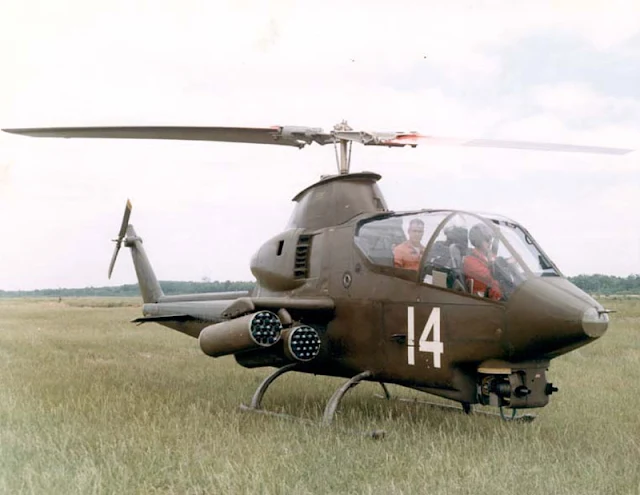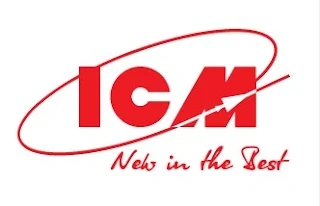Preview - ICM release the "Snake" 32nd scale in CAD form
𝐀𝐇-𝟏𝐆 𝐂𝐨𝐛𝐫𝐚 (E𝐚𝐫𝐥𝐲 P𝐫𝐨𝐝𝐮𝐜𝐭𝐢𝐨𝐧), 𝐔𝐒 𝐀𝐭𝐭𝐚𝐜𝐤 𝐇𝐞𝐥𝐢𝐜𝐨𝐩𝐭𝐞𝐫
From ICM Models
1/32nd scale
Model #32060
ICM's 1/32nd scale kit # 32060 𝐀𝐇-𝟏𝐆 𝐂𝐨𝐛𝐫𝐚 (𝐞𝐚𝐫𝐥𝐲 𝐩𝐫𝐨𝐝𝐮𝐜𝐭𝐢𝐨𝐧), 𝐔𝐒 𝐀𝐭𝐭𝐚𝐜𝐤 𝐇𝐞𝐥𝐢𝐜𝐨𝐩𝐭𝐞𝐫
ICM has offered some CAD drawings of their latest aircraft kit in 1/32nd scale - the 𝐀𝐇-𝟏𝐆 𝐂𝐨𝐛𝐫𝐚 (E𝐚𝐫𝐥𝐲 P𝐫𝐨𝐝𝐮𝐜𝐭𝐢𝐨𝐧), 𝐔𝐒 𝐀𝐭𝐭𝐚𝐜𝐤 𝐇𝐞𝐥𝐢𝐜𝐨𝐩𝐭𝐞𝐫. Before looking at the CADs we will look at the subject and then on to what we know about the forthcoming kit(s) in this range...The Bell AH-1 Cobra (company designation: Model 209) is a two-blade, single-engine attack helicopter manufactured by Bell Helicopter. It was developed using the engine, transmission and rotor system of the Bell's UH-1 Iroquois. The AH-1 is also referred to as the "Huey Cobra" or "Snake".
By June 1967, the first AH-1G Huey Cobras had been delivered to the US Army. Originally designated as UH-1H, the "A" for attack designation was soon adopted and when the improved UH-1D became the UH-1H, the Huey Cobra became the AH-1G. The AH-1 was initially considered a variant of the H-1 line, resulting in the G series letter.
U.S. Army Bell AH-1G HueyCobra attack helicopters over Laos.
AH-1 Cobras were in use by the Army during the Tet offensive in Vietnam in 1968 and through the end of the Vietnam War. Huey Cobras provided fire support for ground forces, escorted transport helicopters and other roles, including aerial rocket artillery (ARA) battalions in the two Airmobile divisions. They also formed "hunter-killer" teams by pairing with OH-6A scout helicopters. A team featured one OH-6 flying slow and low to find enemy forces. If the OH-6 drew fire, the Cobra could strike at the then revealed enemy. Bell built 1,116 AH-1Gs for the U.S. Army between 1967 and 1973, and the Cobras chalked up over a million operational hours in Vietnam. Out of nearly 1,110 AH-1s delivered from 1967 to 1973, approximately 300 were lost to combat and accidents during the war. The U.S. Marine Corps used AH-1G Cobras in Vietnam for a short time before acquiring twin-engine AH-1J Cobras.AH-1 Cobras were deployed for Operation Urgent Fury, the invasion of Grenada in 1983, flying close-support and helicopter escort missions. Army Cobras participated in Operation Just Cause, the U.S. invasion of Panama in 1989.
During Operations Desert Shield and Desert Storm in the Gulf War (1990–91), the Cobras and Super Cobras deployed in a support role. The USMC deployed 91 AH-1W SuperCobras and the US Army 140 AH-1 Cobras; these were operated from forward, dispersed desert bases. Three AH-1s were lost in accidents during the fighting and afterwards. Cobras destroyed many Iraqi armoured vehicles and various targets in the fighting.
Army Cobras provided support for the US humanitarian intervention during Operation Restore Hope in Somalia in 1993. They were also employed during the US invasion of Haiti in 1994. US Cobras were also used in operations later in the 1990s.
The US Army phased out the AH-1 during the 1990s and retired the AH-1 from active service in March 1999, offering them to NATO allies. The Army retired the AH-1 from reserves in September 2001. The retired AH-1s have been passed to other nations and to the USDA Forest Service. The AH-1 continues to be in service with the US military, by the US Marine Corps, which operate the twin-engine AH-1W Super Cobra and AH-1Z Viper. The AH-1 has been replaced by the AH-64 Apache in Army service. Upgraded versions continue to fly with the militaries of several other nations. The AH-1 twin engine versions remain in service with United States Marine Corps (USMC) as the service's primary attack helicopter.
A bit of a controversial step this is - changing from a well-supported scale in 1/35th for military aircraft to 1/32nd. This move will be welcomed by many and lamented on by others. The fact is there have been many 1/32nd scale helicopters in modelling before - notably by Revell. However it is ICM's first helicopter and by its nature - their first in 1/32nd scale.
We have several CADs showing the features of this kit inside and out. The walk around of the whole thing sees the traditional narrow shape and twin-rotor design with several weapons on its stub pylons.
The top-down view further illustrates the narrow track of the Cobra. The streamlined early frame has none of the bumps, fins and antennae as some of the later Super Cobras have.
The earlier AH-1G nose and chin turret are evident in this view, along with rocket pod and MG pods for the stub wings
You will notice here planned to be supplied in the kit are the towing bracket and skid-mounted wheels for use on paved airfields for moving the aircraft easily without firing it up. The cockpit canopy can be posed opened or closed.
The belly of the "snake" here, with a closer look at the chin turret and shell ejectors there.
The rotor assembly and transmission are present in the kit, although it is hard to see them from only above, so you can see it from opened panels on the side.The single-engined Lycoming T53 powered early models of the Cobra G is able to be posed open along with that transmission.
A fully detailed cockpit looks like it only needs a bare minimum of extras to suffice for most - although a lot of modellers will want to super detail in there. The choice is the modellers.
Another choice is what is yet to come from ICM. the latter AH-i is also int he works, along with another AH-1G with Vietnam era pilot crew in a future release...
That is all we know about this kit so far, check out ICM's website for more about this and their other models...



















